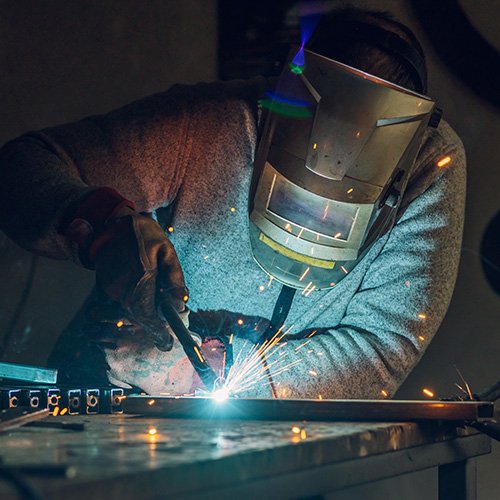Welding is the process of joining two metals together by heating their metal surfaces up to their melting points. However, welding is far from being a simple process. It involves numerous techniques and types that only skilled personnel can understand and execute. Among the different types of welding, MIG welding is the most common and widely used. In this comprehensive blog post, we will provide you with everything you need to know about MIG welding.
How Does MIG Welding Work?
MIG welding is an arc welding process that uses a continuous solid wire electrode that is fed through a welding gun and into the weld pool to join the two base materials. A shielding gas is also sent through the welding gun to protect the weld pool from contamination. MIG stands for Metal Inert Gas.
Before we dive into the actual welding process, it’s important to familiarize yourself with some important terminologies that will help you better understand the process of MIG welding.
Terminology
- Weld Pool: The area of molten metal that forms when the wire electrode melts and fuses with the base material.
- Welding Gun: The device that holds the wire electrode and delivers it to the weld pool.
- Wire Feed Unit: The device that feeds the wire electrode through the welding gun.
- Shielding Gas: The gas that is used to protect the weld pool from contamination.
What is it Used For?
MIG welding is suitable for smaller, lower-volume welding work that takes place in metal workshops and factories. It is commonly used in the automotive industry, construction, and manufacturing. MIG welding is easy to learn and is usually the first type of welding that beginners are taught.
MIG Welding Process
The MIG process is relatively simple and straightforward. It involves the following steps:
-
Preparing the Workpiece: Before you start welding, you need to prepare the workpiece. This involves cleaning the metal surface to remove any dirt, rust, or other contaminants.
-
Setting Up the Equipment: Once the workpiece is cleaned and prepared, you need to set up the MIG welding equipment. This involves connecting the wire feed unit to the welding gun, connecting the shielding gas, and setting the appropriate voltage and wire speed.
-
Positioning the Welding Gun: Once the equipment is set up, you need to position the welding gun in the correct position and angle to achieve the desired weld.
-
Starting the Weld: Once the welding gun is in position, you can start the weld by pulling the trigger on the gun. This will start the flow of the wire electrode and the shielding gas.
-
Welding the Workpiece: As you move the welding gun along the workpiece, the wire electrode melts and fuses with the base material, creating the weld pool. The shielding gas protects the weld pool from contamination and oxidation.
-
Finishing the Weld: Once you have completed the weld, you need to stop the flow of the wire electrode and the shielding gas. You can then remove the welding gun from the workpiece and clean up any excess material.
MIG Welding at Salco
MIG welding is a widely used welding process that is suitable for smaller, lower-volume welding work. It involves feeding a continuous solid wire electrode through a welding gun and into the weld pool, while a shielding gas protects the weld pool from contamination. By understanding the basics of MIG welding and familiarizing yourself with the equipment and terminology, you can become proficient in this popular welding process. Contact Salco today about your next steel fabrication project.



